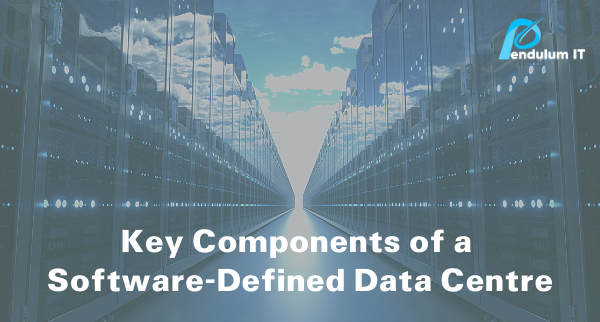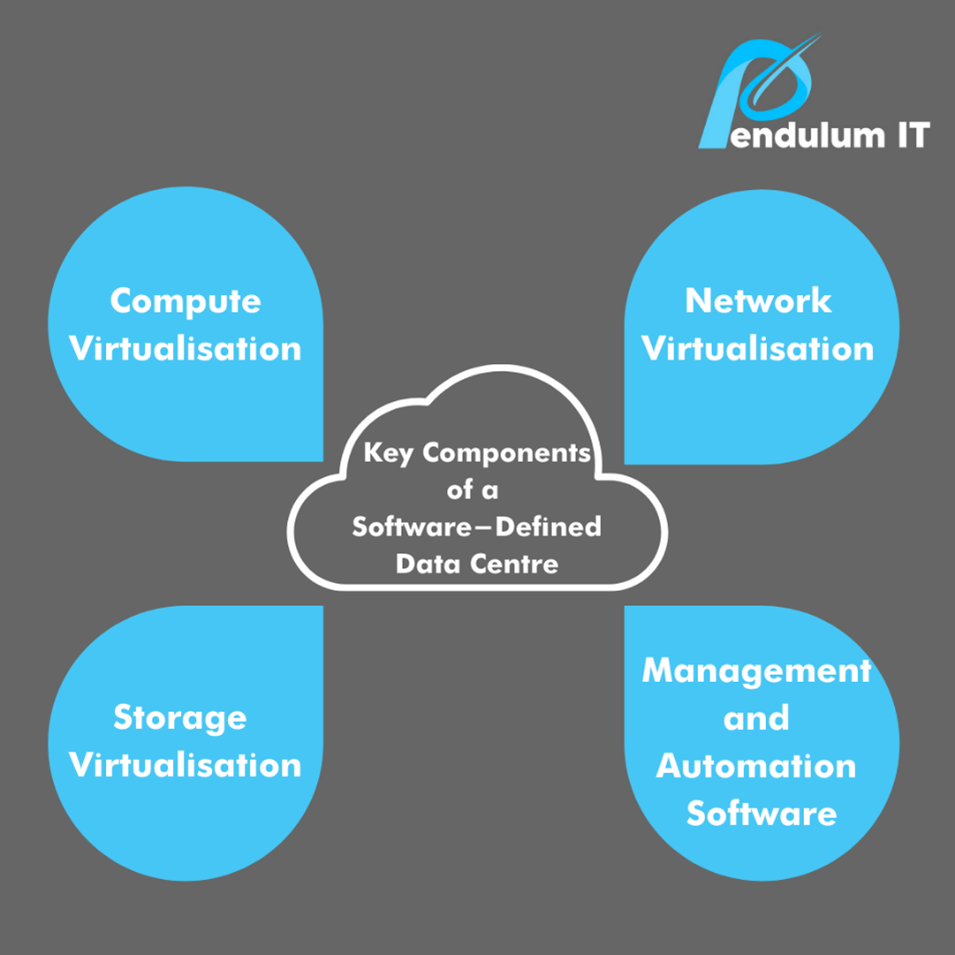
What does the software-defined data centre (SDDC) really look like?
The future appears to be virtualised and software defined, or at least in data centre world. The move to cloud-based virtual machines replacing traditional hardware-based data centres, has allowed many organisations to be flexible and agile, giving them a much needed competitive edge.

About the Author
Melusi Phiri is a Senior Account Manager, helping clients of all sizes, across sectors to find and make best use of technology. Melusi can advise on the full technology stack, including cloud, application modernisation, security, networking and remote working solutions.
What does software-defined mean?
Software-defined refers to the ability to control some or all of the functions of a system using software, rather than relying purely on physical hardware infrastructure. There are significant benefits for organisations that use SDDCs, including lower costs, higher quality products and services, and less risk. In SDDCs, all elements of the infrastructure; networking, storage, CPU and security, are virtualised using virtual machines (VMs) and delivered as a service. SDDC is focussed on integrators and data centre builders, rather than toward tenants.
SDDC is a radical movement away from traditional data centres; organisational data, applications, networks, and infrastructure are centrally housed and accessed. Traditional data centres are the hub for IT operations and physical infrastructure equipment, including servers, storage devices, network equipment, and security devices. By contrast, a SDDC is an ‘IT as a service’ that provides an organisation’s software, infrastructure, or platform needs. SDDCs can be housed on-premises, at a managed service provider, and in private, public or hosted clouds.
SDDCs use a virtualised environment to deliver the functions of a traditional data centre. They can be managed from any location using web browser and API interfaces. Like server virtualisation solutions, such as VMware’s Hypervisor, SDDCs abstract, pool, and virtualise all data centre services and resources. This helps organisations reduce costs by minimising the need for large capital expenditure, increases scalability and improves overall business agility.
Remote management via APIs and web browser interfaces are some of the advantages of SDDCs, along with the automation of many tasks, which will ultimately reduce IT resource usage and provide automated deployment and management of core functions.
What are the benefits of a software-defined data centre?
The core features of SDDCs are broken down into 4 key areas, these are:
Removing network resource limitations. In a traditional hardware-defined data centre, the business is confined to running applications and services that conform to the limitations of the available network resources. The SDDC changes that and allows developers to tailor to business need, rather than developing based on what works on the available hardware that you may have.
Data centre management simplification. SDDCs also greatly simplify data centre management. By virtualising routers and switches to servers and storage, it makes it much easier to deliver, deploy, monitor, and maintain. The network and all its component resources become nothing more than software abstractions that can all be managed from a single interface.
Greater flexibility and reliability. Increased delivery of network resources is achieved along with automation because everything is software-defined. The software is capable of creating and mapping server, storage, and networking resources, which provides much greater agility, flexibility, and reliability.
Automatic scaling A properly implemented SDDC can detect and adapt to spikes in demand, scaling automatically, when necessary, to accommodate surges in traffic and optimize performance.
Key Features of SDDC

Key Features of SDDCs include:
- Compute virtualisation: operating systems, CPUs, memory, and software—reside on cloud servers as a virtual machine. This allows users to create software implementations of computers that can be turned on or turned off as needed, decreasing provisioning time.
- Network virtualisation: removes the need to provide network infrastructure, which is supplied by virtual machines instead. Network infrastructure needs such as telecomms, firewalls, subnets, routing, admin, DNS, etc. are configured inside your cloud SDDC on the vendor’s abstracted hardware.
- Storage virtualisation: storage is provided from the SDDC vendor’s storage pool. The client can choose storage types, based on their needs and costs. Storage to a virtual machine can be quickly added, when needed.
- Management and automation software: reducing the need for IT workforce; SDDCs use management and automation software, keeping business critical functions working around the clock. APIs or web browser access delivers remote management and automation via a software platform accessible from any suitable location.
VMware’s software-defined data centre story
Mobile cloud is here to stay and virtualisation of many hardware based functions comes along with it. This presents its own challenges, despite its radical efficiency benefits. In addressing these challenges, IT functions need to virtualise the entire data centre so that all infrastructure services become as inexpensive and easy to deliver and manage as virtual machines.
The software-defined data centre appears to be the ideal architecture for private, public, and hybrid clouds. Pioneered by VMware and recognised by the industry and analysts alike, SDDC extends the virtualisation concepts you may know— abstraction, pooling and automation — to all data centre resources and services.
VMware’s solution is built on a software-defined hyperconverged infrastructure (HCI) architecture of natively integrated compute, network and storage virtualisation technologies, with self-driving operations and management.
According to IDC, VMware leads the HCI market, with just over 42% market share in 2020 and continues to grow two times faster than its closest competitor. With most of its customers in production worldwide, the richest ecosystem in the industry, and the broadest set of deployment options on the market, VMware provides an enterprise-proven, full HCI stack that puts businesses on the path to hybrid cloud.
Going forward
Creating a SDDC platform requires a great deal of commitment from the organisation. It should not be underestimated, the shift both in skill sets and culture, an organisation will have to make to achieve a full service SDDC. Cloud SDDC migration requires less traditional IT operations skills focused on maintaining the infrastructure, and instead needs skills focused on application delivery speed, product quality, and automation.
Cloud SDDCs reduce IT infrastructure and operations silos and increase the need for Development Operations (DevOps) skills, including container and microservices management needed to run production workloads at scale. Should you decide that SDDCs are for you, having a partner to help guide you through this migration, such as Pendulum IT, can help provide full project and lifecycle management, as you make that transition to a software designed data centre.
About Us

Pendulum is a leading IT company providing services, hardware and software across the UK and internationally. For further information on remote working, public cloud hyperscalers, cybersecurity, modernising the data centre, HCI or any other area please contact your account manager or email info@pendulum-it.com
